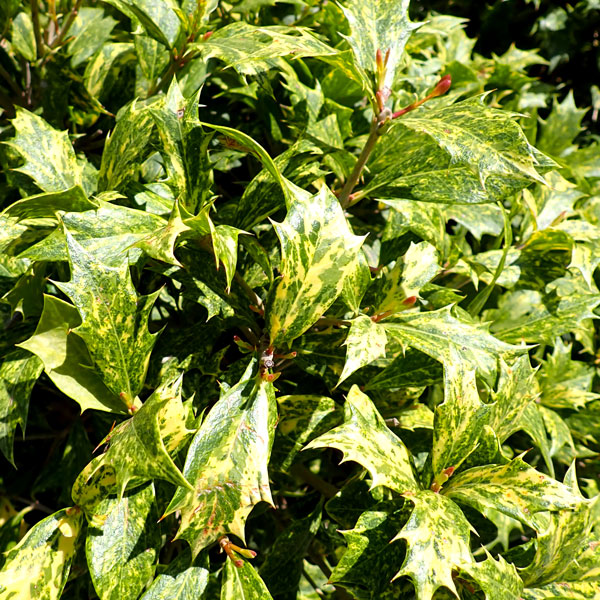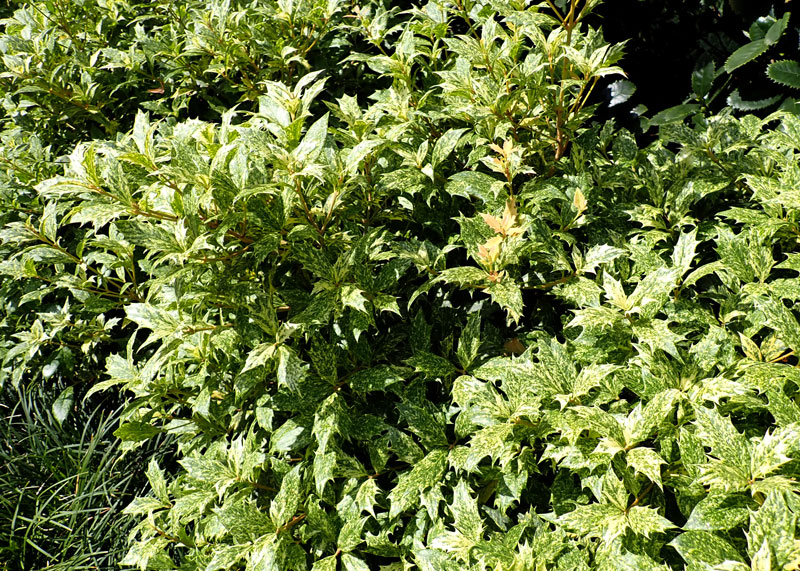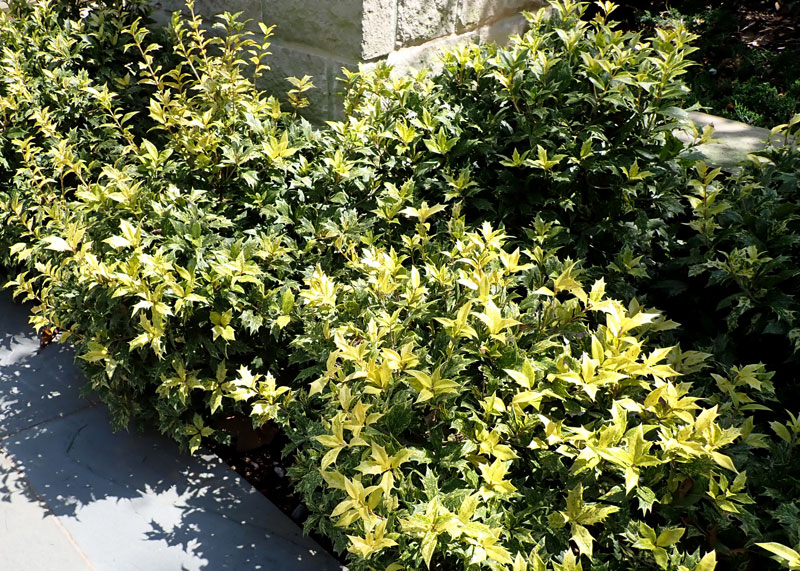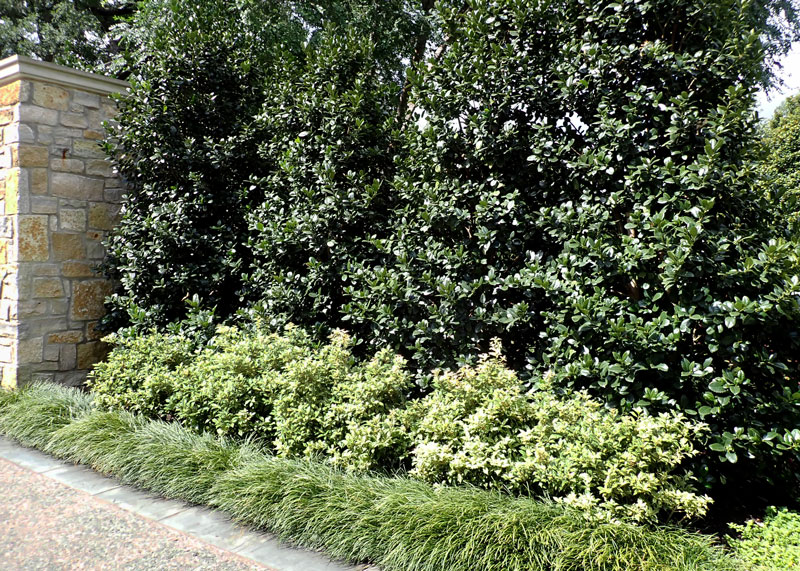Osmanthus ‘Goshiki’
Otherwise known as false holly, osmanthus is a large, slow-growing, dense and evergreen shrub with a rounded habit of growth.
It’s grown for its attractive, holly-like foliage and fragrant (although very small) flowers that appear in fall and persist through the winter. Since you’re probably going to ask, its fruit ripens the year after it is produced but it’s rarely seen and it’s not showy.

Leaves of osmanthus (genus Osmanthus) are opposite one another on the stems, whereas true holly (genus Ilex) leaves are arranged in a staggered, or alternate, pattern up the stems.
What you’ll want to know…
• Scientific name: Osmanthus heterophyllus
• Native home: Taiwan, Japan, Korean peninsula
• Plant family: Oleaceae, or Olive Family. Also includes ash, privet, forsythia, and lilac
• Winter hardy: USDA Plant Hardiness Zones 7-9, although another source lists it as 6-9. Should survive winters in all but the coldest areas of Texas.
• Soil preferences: Does best in acidic soil, pH below 6.0. Will tolerate neutral to slightly alkaline soils. Well-draining soil is essential.

• Sun/Shade: Osmanthus cultivars do best with morning sun and protection from the hot afternoon sun in summer.
• Flowers are fragrant, produced in fall and winter on past season’s growth.
• Resistant to deer, heat, pollution, and urban conditions.

Cultivar ‘Goshiki’
• ‘Goshiki’ is a low-maintenance selection of osmanthus that can be used as a short, prickly hedge or as a mid-height accent in shrub borders.
• Size: ‘Goshiki’ grows to 3-5 ft. tall and 4 ft. wide in a mounding growth form.
• Its variegated leaves are multi-colored, bringing drama to the landscape.
• It’s especially striking when planted in front of the dark green foliage of Nellie R. Stevens, Oakland, or Skyward hollies.
• New plantings of ‘Goshiki’ should be watered deeply and regularly during its first growing season to help the new plants establish good roots. From that point on you’ll want to water as needed to keep the plants moist at all times. Let your new osmanthus plants get dry and they will struggle.
• Mulch your osmanthus plantings with an organic material such as shredded hardwood or pine bark mulch to conserve moisture in the soil.
• Fertilize in early spring with a high-nitrogen plant food with half its nitrogen in slow-release form.
• Prune only as needed to maintain the desired shape and size. Avoid formal shearing.
Origins of the plant’s scientific name…
Osmanthus heterophyllus ‘Goshiki’
The genus name Osmanthus comes from the Greek words for fragrant (osme) and flower (Anthos).
The species name heterophyllus comes from the Greek words for diverse (hetero) and leaf (phyllus).
‘Goshiki’ translates from Japanese for “five colors.” New leaves emerge red, then turn green. The green leaves are dappled with splotches of cream, gray-green, and yellow-green.

